-
收藏模板
- 模板信息
- 更新时间:2023-09-08
- 字数:约29079字
- 页数:约21页
- 格式:.doc
- 推荐版本:Office2016及以上版本
- 售价:5 金币
您可能喜欢的文档
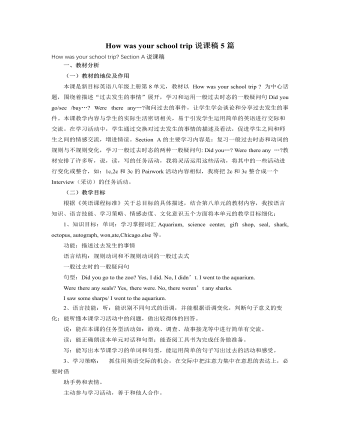
人教版新目标初中英语八年级上册How was your school trip说课稿5篇
If you are sandy,, you want to invite you good friends to come to you party, and you need their help, too..Make a list of things you want to buy and to do first, then discuss in group,act it out..让学生进行评价.评出有特色的“最佳表演”“最佳创意”“最…”小组,给予奖励。6.总结本课的target language.7.Homework.Invite your friends to have a picnic with you, and ask for their help to prepare for the picnic.. make a conversation. 8.教学反思如何激发学生的兴趣, 使他们主动积极地参与活动,开展合作学习, 使课堂充满活力,使设计的每个任务产生实效, 这是任务型教学中的首要问题. 本节课开展小组竞赛, 任务链为:游戏热身( 巩固词汇), 讨论(学习运用句型), 表演(综合运用)等活动, 逐步递进, 从简到难, 从谈论Sally 的周末, 到谈自己一周里所干的家务,电话邀请和请求帮助 ,都是来自现实生活的话题, 极具真实性. 为学生综合表达提供了丰富的素材.让学深入、让学生参与过程的评价体现了以学生为主体的教学理念.

人教版新目标初中英语八年级上册How do you get to school教案2篇
Step Ⅶ Role play ( Work on 1b)1. First ask two students to read the dialogue to the class.Sa: How do you get to school?Sb: Well, I ride my bike to the subway station. Then I take the subway.2. Now work with a partner.Suppose you use two kinds of transportation to get to school \Hangzhou\Beijing... (bus, train, subway, walking, bike, etc.) Tell how you get there. You may use the phrases in 1a.3. Then ask different pairs of students to present their conversations to the class.Step ⅧListening1. Work on 2a(1) First ask students to read the list of information that Thomas wants to know.…where Nina lives.…how far from school she lives.…how long it takes to get to school.…how she gets to school.…what she thinks of the transportation.(2) Tell students what transportation and bus stop mean.bus stop 汽车站 transportation n. 运送;运输Then tell students we'll hear a recording. Please put a checkmark in front of each thing that Thomas wants to know.(3) Now play the recording for students.( Have students pay attention to the sample answer.) (4) Then correct the answers.
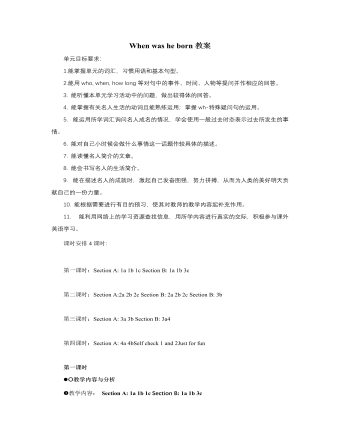
人教版新目标初中英语八年级上册When was he born教案
1.能掌握单元的词汇,习惯用语和基本句型。2.能用who, when, how long等对句中的事件、时间、人物等提问并作相应的回答。3. 能听懂本单元学习活动中的问题,做出较得体的回答。4. 能掌握有关名人生活的动词且能熟练运用;掌握wh-特殊疑问句的运用。5. 能运用所学词汇询问名人成名的情况,学会使用一般过去时态表示过去所发生的事情。 6. 能对自己小时候会做什么事情这一话题作较具体的描述。7. 能读懂名人简介的文章。8. 能会书写名人的生活简介。9. 能在描述名人的成就时,激起自己发奋图强,努力拼搏,从而为人类的美好明天贡献自己的一份力量。10. 能根据需要进行有目的预习,使其对教师的教学内容起补充作用。11. 能利用网络上的学习资源查找信息,用所学内容进行真实的交际,积极参与课外英语学习。课时安排4课时:第一课时:Section A: 1a 1b 1c Section B: 1a 1b 3c第二课时:Section A:2a 2b 2c Section B: 2a 2b 2c Section B: 3b
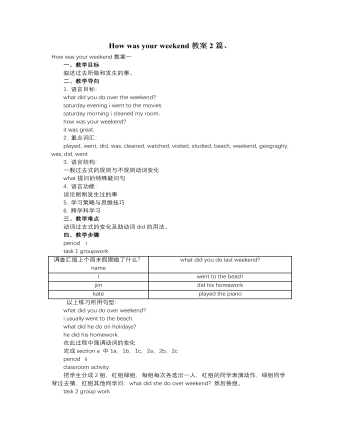
人教版新目标初中英语七年级下册How was your weekend教案2篇
Teaching Goal:1. General aims:Talk about recent past events2. Particular aims:A. Language Focus.Talk about recent past events and think of the past events.B. Language goalsHow was….?It was …What did …do over the weekend?C. Language structures:(1). How was your weekend? I was great. Pay attention to no form.(2). What did you do over the weekend? I played soccer. We went to the beach.D. Useful words and phrases:Words: was, did, went, beach, over, project, test, wasn’t, false, number, geography, spend, week, most, mixture, their, had, little, cook, read, saw, change, everyone, sit, sat, no, anythingPhrases: did one’s homework, played soccer, cleaned my room, went to the beach, played tennis, went to the movies, on Saturday morning, over the weekend, cook … for, what about, do some reading, have a party, talk show, go shoppingE. Grammar language:Present simple past tenseRegular and irregular verbsF. Learning strategies:Tour and holidaysG. Interdiscipinary:H. Emotion and manner:Teaching time: 5 periodsTeaching procedures:Period One教学步骤、时间 教师活动 学生活动 媒体应用Step 1Free talk 3’ Ask some questions like:Who’s on duty today?What’s the weather like? Answer and talk about something.让同学们回答下列问题1. Do you like weekend? (Let some students answer)It takes them three minutes to talk about the question.2. Why do you like weekend? (let the students answer) Most of the students like the weekend此时教师用汉语问:“在周末期间问你干了什么?这句话用英语这么回答?Let the students guess.At last the teacher give them right answer3. What did you do over the weekend?(板书、学习)
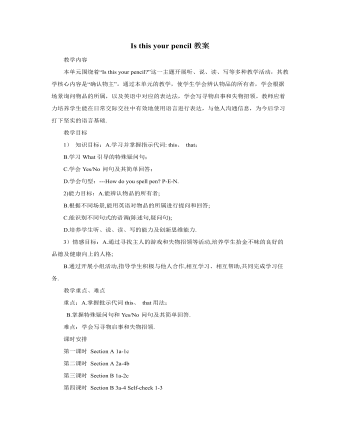
人教版新目标初中英语七年级上册Is this your pencil教案
T: Please look at the pictures and learn the new words.(用多媒体展示新单词效果较好。)1.at prep. 在(里面或附近);在(点刻);2.theart.表示特指的人、物、事或群体 3.lostadj.丢失的;遗失的4.Found adj. (find的过去式、过去分词)找回的5.lost and found 失物招领6.please adv.请7.school n. 学校8.a set of一套;一副(Teach students to read the words.)2. Practice the new words. (事先录制一段短的听力,让学生通过听的训练来强化所学的新单词,并为学习写寻物启示和失物招领作好准备。)T: Please listen to a short passage twice then fill the blanks using the words we learned.(Show students a short passage and play the recording for the students to listen.)There are many things in (1)_____________________in my (2)__________. Look, here’s (3)_________keys. Is this yours? (4)__________call Jim (5)___________753-2289.Typescript:There are many things in the Lost and Found in my school. Look, here’s a set of keys. Is this yours? Please call Jim at 753-2289.
- 查看更多相关Word文档
How was your school trip教案2篇
How was your school trip?教案一
Part 1 Understanding of the teachingmaterial
I. Status and Function
“Go for it!”is based on “Task-Based Language Teaching”. It adheres to “The authenticityprinciple”, “The form-function principle”, “The task dependency principle” and “Theprinciple of learning by doing”. These principles all accord with the demandsof curriculum focus.
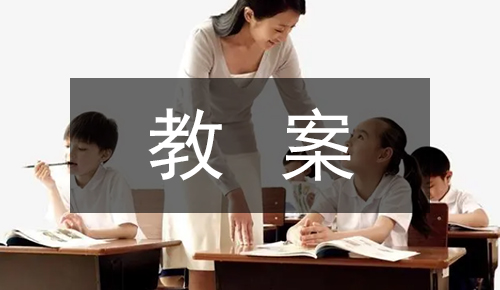
In and of Grade Seven (II), “Go for it!”, studentshave learned “The Simple Past Tense”. And it appears again in of Grade Eight(I). teaches students more about how to talk about events in the past. Inaddition, it gives affirmative and negative statements in the past tense, suchas the sentence patterns “Did you see …?” “Were there …?” “Did you go …?”
As the first part of Unit 8, Section Aopens with a picture presenting the last school trip in the aquarium andcontinues with several step-by-step practice activities, which are all good forstudents to master “The Simple Past Tense”. Doing well in Section A will help studentsintegrate the new target language with that in Section B. Thus, they candescribe the events in the past freely and foster their own ability ofreflecting and practicing.
II. Teaching Objectives
Teaching objective is the beginning andaim of teaching activities. According to the overall goal of the Englishelementary course--- improve students synthetic ability of languageapplication, which should be based on the development of students’ “Languageknowledge”, “Language skills”, “Character building”, “Learning strategies” and“Cross-cultural awareness”. The teaching objectives are described as follows
(I). Knowledge objectives
i. Master the simple past tense ofregular and irregular verbs
ii. Recite the new words and expressionsabout the last school trip in the aquarium, including their
pronunciation and intonation
iii. Master the key sentences and learnhow to talk about the past events
(II). Ability objectives
i. Understand the two dialogues and gainthe information to foster the listening skills
ii. Use the discourse markers to organizesentences together to form a short story and interview others to foster thespeaking skills
iii. Understand the reading material andfind the answers on the wall to foster the reading skills
iv. Write down the correct sentences tofoster the writing skills
(III). Moral objectives
i. Encourage students to think and talkin English through communicative tasks and provide the
students with the chances ofcooperation
ii. Get students to realize theimportance of protecting animals and help them build up the sense of
environmental protection
iii. By visiting the aquarium, encouragestudents to know more about our culture and love our country
III. Teaching important points and difficultpoints
According to thedemands of the curriculum focus---“The Simple Past Tense” is one of the mostimportant tense that students should master, the status and function of thisunit, the teaching importantpoints and difficult points are described as follows
Teaching importantpoints:
(i)The key vocabulary about the animals in the aquarium
(ii)Affirmative and negative statements in the past tense, “Didyou, Were there” questions.
(iii) The ways of talking about the events in the past.
Teachingdifficult points:
(i)Create the situation for students to use “The Simple Past Tense”and the sentence patterns “Did you see …?” “Were there …?” “Did you go …?” freely.
(ii)Find out the answers on the flashcards outside the classroom byunderstanding the questions
on the screen.
(iii)Guide students to make up their own dialogues by interviewing thefamous persons.
IV. Arrangement for the teaching material
David Nunan pointed out that “Don’t use just the textbook.Anything in real life that connect and appropriate to the lesson can be used asteaching resources.” Teachers shoulduse the textbook to teach rather than teach the textbook. McGrath (2002) alsopointed out that the adjustment of the teaching material should be based notonly on the structure of the material itself, but also on students’ learningprocess. So the arrangement should be student-centered. In addition, “Go forit!” emphasizes on “language application” and “cultivating students’ ability ofinnovation and practice”. Curriculum focus lays stress on “Characterbuilding”, “Learning strategies” and “Cross-cultural awareness”. And innovation can help cultivate students’ autonomouslearning and cooperative learning. So, the arrangement for the teachingmaterial is described as follows:
On recycling “The Simple Past Tense”,present some pictures about the recent past events in the world and havestudents describe them instead of asking the question in 1a. On teaching thekey vocabulary, the videotapes and flash are used to attract students’attention. The tasks of “Test your memory” and “Guessing games” are selected onteaching the key sentence patterns “Did you see …?” “Were there …?”and “Did yougo …?” in 3b. The task of interview is to talk something about thelast trip between “reporters” and “famous persons”. The task of “Can you find them out on the wall?” focuseson students’ skills of listening, speaking, reading and writing. Students won’tfind the answers outside on the wall until they understand the reading materialin 3a. And the last task “ Use your imagination” asks students to summarizewhat they have learned, then use “The Simple Past Tense” to make up a story byadding sentences themselves.
Part 2 Teaching Methodologies andLearning Strategies
I.Student Analysis
The students in Grade Eight havelearned how to describe the past events before, though they don’t know muchabout it, they have shown their confidence in learning English. They candescribe the pictures, and exchange their information according to the familiartopic. They are good at imitation, they are eager to show their abilities. So,in this way, students are encouraged to fulfill some small tasks to enhance theability of solving problems through interaction in a target language.
The more advanced students wish tochallenge each other with new vocabulary and create original dialogues usingkey grammar and vocabulary items. The less advanced students may benefit frompairwork and groupwork, because the more fluent students may help them, so theymay have the chance to practise.
II. Teaching Methodologies
i. The Task-based Language Teaching
Thetheoretical background of the Task-based Language Teaching comes frompsycholinguistics. Psycholinguistic perspective is that a task is a device that guideslearners to engage in certain types of information-processing that are believedto be important for effective language use and for language acquisition.Nunan(1989)also pointed out, “Setting specific tasks for students so that theyact as if they were using the language in real life — this is part of theessence of task-based teaching.” In this lesson, I mainly adopt this method tohelp my teaching. For example, six tasks are arranged for students to fulfillthrough interaction in a target language. So students can get more chances tospeak out.
ii. The Communicative Language Teaching
The curriculum focus emphasizes on“learner-centered”. So does “TheCommunicative Language Teaching” proposed by M.Canale and M.Swain whichprovides students lots of information and encourage them to take an active partin it. In the task of interview, by giving students some key sentences, letthem interview the famous persons in groups of two or three according to theirlast trip and their photos. They may use their imagination to make up their newdialogue. It not only enlarges their intellectual circles, but also improvestheir spoken English.
iii. The Direct Method
Berlitz’s Direct Method forbid thefirst language in classrooms, it enables the students to think in the targetlanguage, so that they can use it to express themselves directly withoutreferring to their mother tongue. In this way, concrete vocabulary was taughtby using videotapes, demonstration, objects and pictures. In the first sixminutes, the words “shark, octopus and seal” were taught by using this method.Thus, the use of the target language as a means of instruction andcommunication in the classroom contributes greatly to forming the habit ofthinking in the target language, which is necessary in efficient realcommunication.
III.Learning Strategies
i. To cultivate learners’ autonomous learning.
“Curriculum focus” recommends “The Task-based LanguageTeaching”, which has a specific objective and has meaning as their primaryfocus. In the tasks of “Test your memory” and “Guessing games”, to providestudents some pictures and photos will help them practise the target languageand cultivate their autonomous learning. And the tasks will encourage them totake part in the classroom activities and pay constant attention to expandingtheir language.
ii. To cultivate learners’ cooperative learning.
In the area of “Language skills”, “Curriculum focus”demands that the students in Grade Eight should make up several dialoguesaccording to the topic and give a performance with the teacher’s help. In thetasks of “Interview” and “Can you find them out on the wall?”, by arrangingvarious interaction activities, such as teacher-students, students-students,especially the activities among students, let students communicate with eachother by practicing to stimulate learners’ interests, then cultivate their cooperativelearning and reinforce their learning motivation. Thus, they can help eachother and form the good learning style.
iii. To cultivate learners’ ability of reflecting and practicing.
When thelearners are describing the past events, they will use “The Simple Past Tense”to help them. Thus, it will cultivate their own ability of reflecting andpracticing
IV.Teaching Aids
Besides the textbook and the speechcassette, Internet also provides different kinds of pictures and videotapeswhich will attract students’ attention. Furthermore, students’ own photos, teacher’sgestures, some real objects and the projector will also help the teaching. Onthe other hand, they will help students fulfill their tasks successfully.
Part 3 Teaching procedures
I.Teaching procedures
| Teaching procedures | Teaching aims | |||||||
Pre-task | i. Warming up(3 minutes)(Pictures) Recycle the “Simple Past Tense” by giving some words and pictures about recent past events in the world. Encourage Ss to describe them by having a competition among them. ii. Do you know the animals in the aquarium? (3 minutes)(Videotapes, flash) Get Ss to watch a short play to teach the animals in the aquarium. ( The key words: aquarium, shark, seal, crab, octopus, shell, starfish, fish) | This activity helps students describe the past events in the world. And the competition is aimed to make them become active. This activity provides the key vocabulary in Section A, Unit 8. And the short play is interesting enough to attract students’ attention. | |||||||
While-task
| Task One--- Test your memory(3 minutes) (Pictures) i. Give Ss 30 seconds to remember the 9 pictures on the screen. ii.Test their memories by using “Were there …?”or “Did you see …?”to ask and answer. | Students like new challenge, so testing their memory will arouse their interest. And this task provides speaking practice using the target language “Were there …?” “Did you see …?” | |||||||
Task Two--- Guessing games(3 minutes) (Photos & the projector) Call out some students with their photos to come to the front. Get the others to guess where he went for his last trip by asking “Did you go …?” | Students are curious to know the places their classmates traveled, so this task gives them the chances to use the target language “Did you go …?” | ||||||||
Task Three--- Listening(5 minutes) (Audiocassette, the recorder) Have Ss listen to the tape and do the listening exercises on Page 47 & 48. Encourage Ss to give the answers by having a competition among them.
| This task gives students practice in understanding the target language in spoken conversation. 1b and 2a focus on fluency. They will make students become confident. 2b will challenge the more advanced students. | ||||||||
Task Four--- Interview(10 minutes) (Photos, the projector) i Have Ss bring their own photos. The photos should be about their last trips. Ask the students in Group 1 to exchange the photos with the students in Group 2. So does Group 3 & Group 4. ii Suppose the students in Group 2 and Group 4 are famous persons. Give the students in Group 1 and Group 3 three minutes to interview the famous persons according to the photos. IiiCall out some to act it out. See who are the best actor and actress. (Here are some suggestions for the reporters to interview the famous persons.) I am a reporter from CCTV-9. Now I am going to interview …, How was your last trip? Did you go …? /Where did you go? Were there …? What did you do there? Did you see … there? Did you buy a souvenir? Did people there ask for your autograph? … | This task provides oral practice using the target language. Students have traveled some places and taken some photos. They have their own opinions about their last trip. So this task is for them to show their abilities of sharing opinions in English. And they are eager to be famous persons, so the task is aimed to motivate them. | ||||||||
Task Five--- Can you find them out on the wall? (9 minutes)(Flashcards, answer sheets, CAI, the projector) i Books closed. Show the six questions on the screen. But the answers are on the flashcards outside the classroom. Students sit in different rows should answer different questions. (Row1-Q1, …,Row 6-Q6) ii Hand out the answer sheets. Each group just gets one. Ss sit on the left—Go out of the classroom to find the answers on the wall. Ss sit on the right—Don’t go out! Just write down the answers by understanding their partners’ explanation. IiiEvery time, just ask one student from each group to find the answers on the wall outside the classroom. iv.Check the answers from each group. See which group has the most correct answers. And which group is the first one to finish the task.
v. Have Ss correct the statements on Page 49 | This task is new and the competition will help students get involved. In addition, it provides the students with the chances of cooperation. Finding the correct answers will foster their reading skills. Explaining the answers to their partners will foster their speaking skills. Writing down the answers correctly will foster their listening and writing skills. In a word, it will develop students’ skills of listening, speaking, reading and writing. | ||||||||
Post-task | Task Six---Use your imagination(3 minutes) iHave Ss make up their own story. One student starts the story by saying where he went, the others add sentences to continue the story. ii. Have a competition among them. One sentence, one point. They should use “The Simple Past Tense”. And students who can use the discourse marker can get more points. See which group has the most correct sentences. | Students have different kinds of ideas about the trips. This task helps them use their imagination to share their ideas with others, and it also provides oral practice using the target language. | |||||||
Summary(1 minute) Have Ss summarize “the Simple Past Tense” they learned today. | This activity helps Ss know what they have learned in this unit. | ||||||||
Assignment i Recite the new words and phrases in Section A, Unit 8 IiWrite a composition about your last trip IiiPreview Section B, Unit 8 | The assignment aims to help students recycle what they have learned today and foster the ability of reflecting. |
II. Blackboard design
How was your school trip? I. New words & phrasesII. Sentence patterns aquarium What did you do …? SharkDid you …? seal Yes, I did. / No, I didn’t OctopusWere there …? souvenir Yes, there were. /No, there weren’t. autograph III. Competition Group 1 Group 2Group3 Group 4 |
III. Pre-assessment
In this lesson, formative and summativeassessment are adopted. By letting students fulfill different kinds of tasks tobuild self-assessment and group assessment. And it will do help to students’ autonomous learning and cooperative learning.
But the task of “Interview” may bedifficult for some students. So the teacher may provide some languagestructures or interview a student first to make sure that this activity isgoing on smoothly. And the task of “Can you find them out on the wall?” may benew for the students, so the teacher may give an example first to help studentsunderstand the meaning of the game. The task may make students become crazy. Whensome are going out to find the answers, the others should be in order. And the teachershould make sure that students inside mustn’t be too noisy.
Appendix
Actor/actress____________
| Self-assessment | Group-assessment | Observation assessment |
i. Pronunciation and intonation |
|
|
|
ii. Asking and answering clearly |
|
|
|
iii. Cooperation |
|
|
|
iv. Content |
|
|
|
v. Creativity |
|
|
|
vi. Taking an active part in the activity |
|
|
|
vii. Reaction of audiences |
|
|
|
viii. Stage properties |
|
|
|
B—Good!
C—Not bad!
D—Come on!
How was your school trip?教案二
单元课时安排:5课时
单元目标与要求
1.学习询问和谈论过去发生的事情。如:what did you do on your school trip ? did you go to the zoo? No, Ididn’t.I went to the aquarium.等。
2.能听、说、读、写Section A、B部分中的四会单词和四会句型。
3.能够听、说、读Section A、B部分中的对话。能够听懂简单的听力回答,完成selfcheck 部分的练习。
4.能够掌握动词过去式的构成法。规则动词和不规则动词的一般过去式。一般过去式的肯定句和否定句。Did you were there 引导的一般疑问句。
第一课时
教学内容与分析
1.教学内容:Section A1a, 1b,1c
2.教学目标:
a. 能够听、说、读、写地点名词aquarium, science center, gift shop, museum, 和动物名词dolphin, seal ,shark, octopus。
b.能够听、说、认读句子:what did you do last school trip? Did you go to the zoo? Were there anysharks?并能运用这些句型来描述自己和他人的身高。
1. 能简单进行询问和谈论过去发生的事情。
教学重点、难点分析:
1.教学重点:能够听、说、读、写地点名词aquarium, science center, gift shop, museum, 和动物名词dolphin, seal ,shark, octopus。实际情景中会运用询问和谈论过去发生的事情。
(i)The key vocabularyabout the animals in the aquarium
ii)Affirmative and negative statements in the past tense, “Did you, Werethere” questions.
(iii) The ways of talking about the events in the past.
2.教学难点:对过去的事情进行询问并会简单的描述。Aquarium, souvenir的发音也是本课时的教学难点。
(i)Create thesituation for students to use “The Simple Past Tense” and the sentence patterns“Did you see …?” “Were there …?” “Did you go …?” freely.
(ii)Find out theanswers on the flashcards outside the classroom by understanding the questionson the screen.
(iii)Guide students tomake up their own dialogues by interviewing the famous persons.
课前准备
1.教师准备主情景图的教学课件。
2.教师准备磁带和录音机。
教师设计(过程)
复习(Warm-up/Revision)
1.enjoy the movie (let’s travel)
a. 教师播放录音,师生一起吟唱并观看。
b. 请学生watch the screen进行问答。如:
what did I do yesterday? What did I do on vocation? What did Sam do threedays ago?
2. pairs work:“what did he/ she/ they do on last school trip?”
操练(Presentation/Practice)
1. 教学句型“Did you go to the zoo?”
a. guessing game:” What did Sam do on his last school trip?
T: what did Sam do on his last school trip? Do you know?
S: did he ……..?
2.教学地点名词aquarium, science center, gift shop, museum, 和动物名词dolphin, seal ,shark, octopus。实际情景中会运用询问和谈论过去发生的事情。
a Do you know the animals in the aquarium?
(3 minutes)(Videotapes, flash)
Get Ss to watch a short movie to teach the animals in the aquarium.( The key words: aquarium, shark, seal, crab, octopus, shell, starfish, fish)
b Task One--- Test your memory(3 minutes) (Pictures)
i. Give Ss 30 seconds to remember the 9 pictures on the screen.
ii.Test their memories by using “Were there …?”or “Did you see…?”to ask and answer.
3. pairs work (were there any books in the classroom yesterday? 1c
4..Listening(5 minutes)
(Audio cassette, therecorder)
Have Ss listen to the tape and do the listening exercises on Page 47 1b.Encourage Ss to give the answers by having a competition among them
巩固(Extension/Consolidation)
1. . Interview(10 minutes)
(Photos, the projector)
i Have Ss bring their own photos. The photos should be about their lasttrips. Ask the students in Group 1 to exchange the photos with the studentsin Group 2. So does Group 3 & Group 4.
iiSuppose the students in Group 2 and Group 4 are famous persons. Give thestudents in Group 1 and Group 3 three minutes to interview the famouspersons according to the photos.
IiiCall out some to act it out. See who are the best actor andactress.
(Here are some suggestions for the reporters to interview the famouspersons.)
I am a reporter from CCTV-9.
Now I am going to interview …,
How was your last trip?
Did you go …? /Where did you go?
Were there …?
What did you do there?
Did you see … there?
Did you buy a souvenir?
Did people there ask for your autograph?
2.完成课后相应的练习。
3.Homework
1. 抄写本课时出现的地点名词aquarium, science center, gift shop, museum, 和动物名词dolphin, seal ,shark, octopus。
2. 采访并做好记.
II.Blackboard design
Unit 8How was your school trip?
I. New words & phrasesII. Sentencepatterns
aquarium What did you do …?
SharkDid you …?
seal Yes, I did. / No, I didn’t
OctopusWere there …?
souvenir Yes, there were. /No, there weren’t.
autograph
III. Competition
Group 1 Group 2Group3 Group 4
第二课时
教学内容与分析:
1.教学内容: Section A. 2a 2b 2c 3b
2.教学目标:
a.能听懂,会说:how was your day off? What else did he do? What did you do on…? 并能在情景中熟练运用。
b.掌握一般过去式及词汇autograph ,win jate took, hang out
c.情感教育,尊重他人
数学重难点:
1.本课需要重点掌握句型:.要求学生能替换关键词汇autograph ,win jate took, hang out
掌握一般过去式及词造新句并在实际情景中自如运用。
2.本课时的难点是:一般过去使的运用,规则动词和不规则动词的一般过去式。一般过去式的肯定句和否定句。Di you were there 引导的一般疑问句。
课前准备:
1.本课时的教学课件。
2.相关的录音磁带及录音机。
教学设计:(过程)
复习(Warm-up/Revision)
1. chant
clap, clap, clap, clap our hands,
I say go ,you say went.
Go, go, go, went,went,went.
Buy, buy, buy .bought, bought. bought
Take, take, take,took took took
Eat, eat eat. ate……..
2. revise “ what did he see ?”
A:What day is it today?
B: It’s Monday.
A: what did he see in the aquarium?
3.look at the chart, say out the questions
操练(Presentation/Practice)
1.guessing game。”What did I do yesterday evening?”
2.放2a部分的录音,感知新内容并完成练习。
巩固(Extension/Consolidation)
1.完成配套练习。
2.听2a , 2b 的录音。
3.同学一起练chant.
第三课时
教学内容与分析:
1.教学内容: Section A. 3a 3b 3c
2.教学目标:
a.能听懂,会说:how was your day off ? What did you do on…? 并能在情景中熟练运用。
b.掌握一般过去式及词汇visitor, gift, drive, end, octopus, Chicago
outdoor, off
c.情感教育,尊重他人
教学重难点:
1.本课需要重点掌握句型:.要求学生能替换关键词汇 Class 9 had a great time on the school trip. have a great time/have agood time/enjoy oneself
At the end of the day…掌握一般过去式及词造新句并在实际情景中自如运用。
2.本课时的难点是:一般过去使的运用,规则动词和不规则动词的一般过去式。一般过去式的肯定句和否定句。Di you were there 引导的一般疑问句。
课前准备:
1.本课时的教学课件。
2.相关的录音磁带及录音机。
转载请注明出处!本文地址:
https://www.lfppt.com/worddetails_5180720.html最新课件教案文档
-
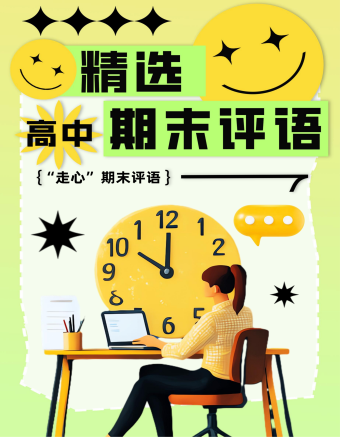
精选高中生期末评语
1、该生学习态度端正 ,能够积极配合老师 ,善于调动课堂气氛。 能够积极完成老师布置的任务。学习劲头足,听课又专注 ,做事更认 真 ,你是同学们学习的榜样。但是,成绩只代表昨天,并不能说明你 明天就一定也很优秀。所以,每个人都应该把成绩当作自己腾飞的起 点。2、 你不爱说话 ,但勤奋好学,诚实可爱;你做事踏实、认真、为 人忠厚 ,是一个品行端正、有上进心、有良好的道德修养的好学生。在学习上,积极、主动,能按时完成老师布置的作业,经过努力 ,各 科成绩都有明显进步,你有较强的思维能力和学习领悟力,学习也有 计划性,但在老师看来,你的潜力还没有完全发挥出来,学习上还要有持久的恒心和顽强的毅力。
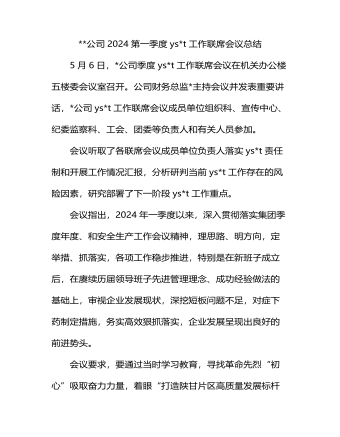
公司2024第一季度意识形态工作联席会议总结
一是要把好正确导向。严格落实主体责任,逐条逐项细化任务,层层传导压力。要抓实思想引领,把理论学习贯穿始终,全身心投入主题教育当中;把理论学习、调查研究、推动发展、检视整改等有机融合、一体推进;坚持学思用贯通、知信行统一,努力在以学铸魂、以学增智、以学正风、以学促干方面取得实实在在的成效。更加深刻领会到******主义思想的科学体系、核心要义、实践要求,进一步坚定了理想信念,锤炼了政治品格,增强了工作本领,要自觉运用的创新理论研究新情况、解决新问题,为西北矿业高质量发展作出贡献。二是要加强应急处事能力。认真组织开展好各类理论宣讲和文化活动,发挥好基层ys*t阵地作用,加强分析预警和应对处置能力,提高发现力、研判力、处置力,起到稳定和引导作用。要坚决唱响主旋律,为“打造陕甘片区高质量发展标杆矿井”、建设“七个一流”能源集团和“精优智特”新淄矿营造良好的舆论氛围。三是加强舆情的搜集及应对。加强职工群众热点问题的舆论引导,做好舆情的收集、分析和研判,把握时、度、效,重视网上和网下舆情应对。
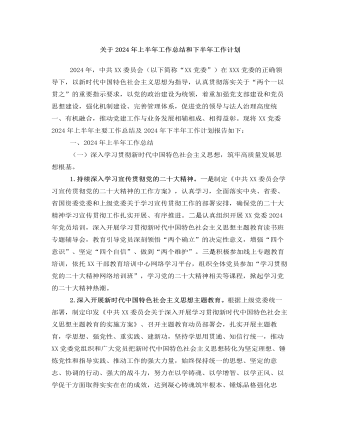
关于2024年上半年工作总结和下半年工作计划
二是深耕意识形态。加强意识形态、网络舆论阵地建设和管理,把握重大时间节点,科学分析研判意识形态领域情况,旗帜鲜明反对和抵制各种错误观点,有效防范处置风险隐患。积极响应和高效落实上级党委的决策部署,确保执行不偏向、不变通、不走样。(二)全面深化党的组织建设,锻造坚强有力的基层党组织。一是提高基层党组织建设力量。压实党建责任,从政治高度检视分析党建工作短板弱项,有针对性提出改进工作的思路和办法。持续优化党建考核评价体系。二是纵深推进基层党建,打造坚强战斗堡垒。创新实施党建工作模式,继续打造党建品牌,抓实“五强五化”党组织创建,广泛开展党员教育学习活动,以实际行动推动党建工作和经营发展目标同向、部署同步、工作同力。三是加强高素质专业化党员队伍管理。配齐配强支部党务工作者,把党务工作岗位作为培养锻炼干部的重要平台。
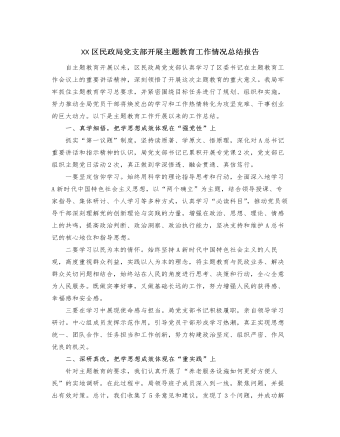
XX区民政局党支部开展主题教育工作情况总结报告
二要专注于解决问题。根据市委促进经济转型的总要求,聚焦“四个经济”和“双中心”的建设,深入了解基层科技工作、学术交流、组织建设等方面的实际情况,全面了解群众的真实需求,解决相关问题,并针对科技工作中存在的问题,采取实际措施,推动问题的实际解决。三要专注于急难愁盼问题。优化“民声热线”,推动解决一系列基层民生问题,努力将“民声热线”打造成主题教育的关键工具和展示平台。目前,“民声热线”已回应了群众的8个政策问题,并成功解决其中7个问题,真正使人民群众感受到了实质性的变化和效果。接下来,我局将继续深入学习主题教育的精神,借鉴其他单位的优秀经验和方法,以更高的要求、更严格的纪律、更实际的措施和更好的成果,不断深化主题教育的实施,展现新的风貌和活力。
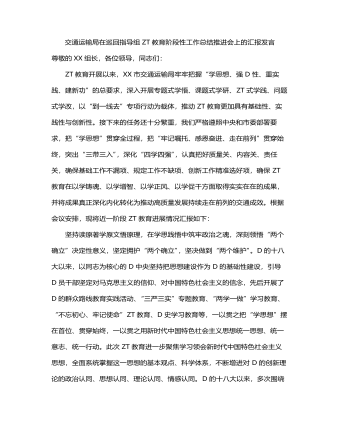
交通运输局在巡回指导组主题教育阶段性工作总结推进会上的汇报发言
今年3月,市政府出台《关于加快打造更具特色的“水运XX”的意见》,提出到2025年,“苏南运河全线达到准二级,实现2000吨级舶全天候畅行”。作为“水运XX”建设首战,谏壁闸一线闸扩容工程开工在即,但项目开工前还有许多实际问题亟需解决。结合“到一线去”专项行动,我们深入到谏壁闸一线,详细了解工程前期进展,实地察看谏壁闸周边环境和舶通航情况,不断完善施工设计方案。牢牢把握高质量发展这个首要任务,在学思践悟中开创建功之业,坚定扛起“走在前、挑大梁、多做贡献”的交通责任,奋力推动交通运输高质量发展持续走在前列。以学促干建新功,关键在推动高质量发展持续走在前列。新时代中国特色社会主义思想着重强调立足新发展阶段、贯彻新发展理念、构建新发展格局,推动高质量发展,提出了新发展阶段我国经济高质量发展要坚持的主线、重大战略目标、工作总基调和方法论等,深刻体现了这一思想的重要实践价值。
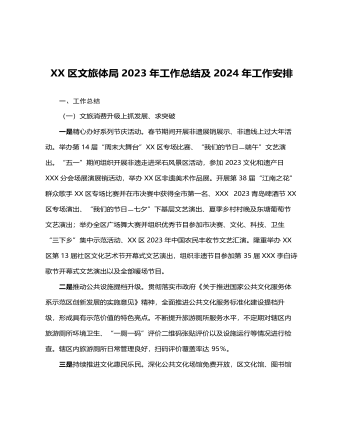
XX区文旅体局2023年工作总结 及2024年工作安排
三、2024年工作计划一是完善基层公共文化服务管理标准化模式,持续在公共文化服务精准化上探索创新,围绕群众需求,不断调整公共文化服务内容和形式,提升群众满意度。推进乡镇(街道)“114861”工程和农村文化“121616”工程,加大已开展活动的上传力度,确保年度目标任务按时保质保量完成。服务“双减”政策,持续做好校外培训机构审批工作,结合我区工作实际和文旅资源优势,进一步丰富我市义务教育阶段学生“双减”后的课外文化生活,推动“双减”政策走深走实。二是结合文旅产业融合发展示范区,全力推进全域旅游示范区创建,严格按照《国家全域旅游示范区验收标准》要求,极推动旅游产品全域布局、旅游要素全域配置、旅游设施全域优化、旅游产业全域覆盖。
今日更新Word
-

精选高中生期末评语
1、该生学习态度端正 ,能够积极配合老师 ,善于调动课堂气氛。 能够积极完成老师布置的任务。学习劲头足,听课又专注 ,做事更认 真 ,你是同学们学习的榜样。但是,成绩只代表昨天,并不能说明你 明天就一定也很优秀。所以,每个人都应该把成绩当作自己腾飞的起 点。2、 你不爱说话 ,但勤奋好学,诚实可爱;你做事踏实、认真、为 人忠厚 ,是一个品行端正、有上进心、有良好的道德修养的好学生。在学习上,积极、主动,能按时完成老师布置的作业,经过努力 ,各 科成绩都有明显进步,你有较强的思维能力和学习领悟力,学习也有 计划性,但在老师看来,你的潜力还没有完全发挥出来,学习上还要有持久的恒心和顽强的毅力。
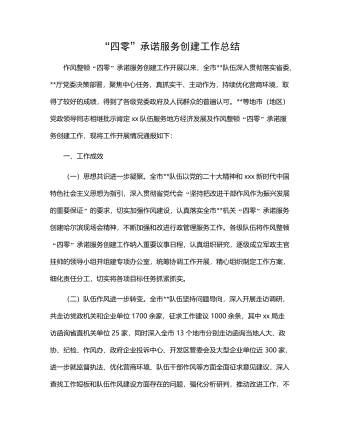
“四零”承诺服务创建工作总结
(二)坚持问题导向,持续改进工作。要继续在提高工作效率和服务质量上下功夫,积极学习借鉴其他部门及xx关于“四零”承诺服务创建工作的先进经验,同时主动查找并着力解决困扰企业和群众办事创业的难点问题。要进一步探索创新,继续优化工作流程,精简审批程序,缩短办事路径,压缩办理时限,深化政务公开,努力为企业当好“保姆”,为群众提供便利,不断适应新时代人民群众对政务服务的新需求。(三)深化内外宣传,树立良好形象。要深入挖掘并及时总结作风整顿“四零”承诺服务创建工作中形成的典型经验做法,进一步强化内部宣传与工作交流,推动全市创建工作质效整体提升。要面向社会和公众庄严承诺并积极践诺,主动接受监督,同时要依托电台、电视台、报纸及微信、微博等各类媒体大力宣传xx队伍作风整顿“四零”承诺服务创建工作成果,不断扩大社会知情面和群众知晓率。
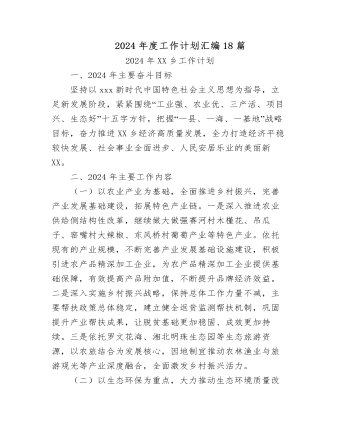
2024年度工作计划汇编(18篇)
1.市政基础设施项目5项,总建设里程2.13km,投资概算2.28亿元。其中,烔炀大道(涉铁)工程施工单位已进场,项目部基本建成,正在办理临时用地、用电及用水等相关工作;中铁佰和佰乐(巢湖)二期10KV外线工程已签订施工合同;黄麓镇健康路、纬四路新建工程均已完成清单初稿编制,亟需黄麓镇完成图审工作和健康路新建工程的前期证件办理;公安学院配套道路项目在黄麓镇完成围墙建设后即可进场施工。2.公益性建设项目6项,总建筑面积15.62万㎡,投资概算10.41亿元。其中,居巢区职业教育中心新建工程、巢湖市世纪新都小学扩建工程已完成施工、监理招标挂网,2月上旬完成全部招标工作;合肥职业技术学院大维修三期已完成招标工作,近期签订施工合同后组织进场施工;半汤疗养院净化和医用气体工程已完成招标工作;半汤疗养院智能化工程因投诉暂时中止;巢湖市中医院(中西医结合医院)新建工程正在按照既定计划推进,预计4月中下旬挂网招标。

驻村工作队2024年第一季度工作总结汇编(4篇)
三是做大做强海产品自主品牌。工作队于xx年指导成立的冬松村海产品合作社,通过与消费帮扶平台合作,在工作队各派出单位、社会团体、个人支持下,已获得逾xx万元销售额。2022年底工作队推动合作社海产品加工点扩建的工作方案已获批,待资金下拨后将正式启动扩建工作。四是积极助企纾困,带动群众增收致富。工作队利用去年建立的xx镇产业发展工作群,收集本地企业在产品销售、技术、人力、资金、运营、用地等方面的需求,并加大xx支持乡村振兴力度,xx助理赴各村委开展多场xx政策支持乡村振兴宣讲活动,本季度有x万元助农贷款获批,xx万贷款正在审批中。在壮大既有产业的同时,完善联农带农机制,一方面鼓励企业雇用本地农户就业,另一方面计划与本地农户签订长期收购合同,让农民种得放心、种得安心,带动当地群众共同致富。

主题教育总结常用提纲大全
第一,主题教育是一次思想作风的深刻洗礼,初心传统进一步得到回归。第二,主题教育是一次沉疴积弊的集中清扫,突出问题进一步得到整治。第三,主题教育是一次强化为民服务的生动实践,赤子之情进一步得到提振。第四,主题教育是一次激发创业担当的有利契机,发展层次进一步得到提升。2.第一,必须提领思想、武装思想。第二,必须聚焦问题、由表及里。第三,必须领导带头、以上率下。第四,必须务实求实、认真较真。3.一是抬高政治站位,坚持大事大抓。二是坚持思想领先,狠抓学习教育。三是突出问题导向,深入整改纠治。四是坚持领导带头,发挥表率作用。4.一是立足“早”字抓筹划。二是着眼“活”字抓学习。三是围绕“统”字抓协调。5.一是形势所需。二是任务所系。三是职责所在。四是制度所定。6.一要提升认识。二要积极作为。三要密切协作。
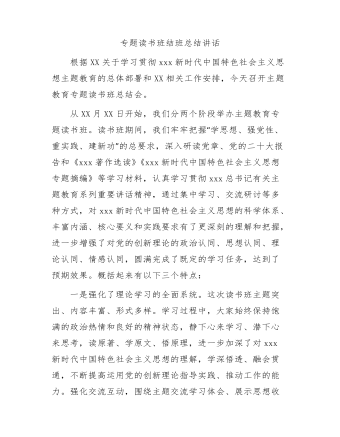
主题教育专题读书班结班总结讲话
第二,要把调查研究贯穿始终,实干担当促进发展。开展好“察实情、出实招”“破难题、促发展”“办实事、解民忧”专项行动,以强化理论学习指导发展实践,以深化调查研究推动解决发展难题。领导班子成员要每人牵头XX个课题开展调查研究,XX月底前召开调研成果交流会,集思广益研究对策措施。各部门、各单位要制定调研计划,通过座谈访谈、问卷调查、统计分析等方式开展调查研究,解决工作实际问题,帮助基层单位和客户解决实际困难。第三,要把检视问题贯穿始终,廉洁奉公树立新风。认真落实公司主题教育整改整治工作方案要求,坚持边学习、边对照、边检视、边整改,对标对表xxx新时代中国特色社会主义思想,深入查摆不足,系统梳理调查研究发现的问题、推动发展遇到的问题、群众反映强烈的问题,结合巡视巡察、审计和内外部监督检查发现的问题,形成问题清单。

















